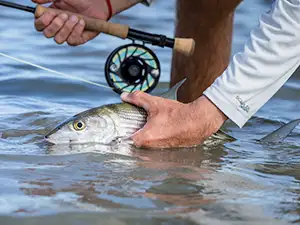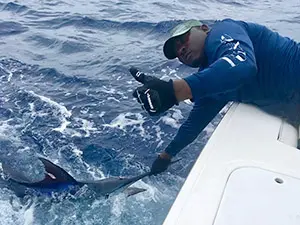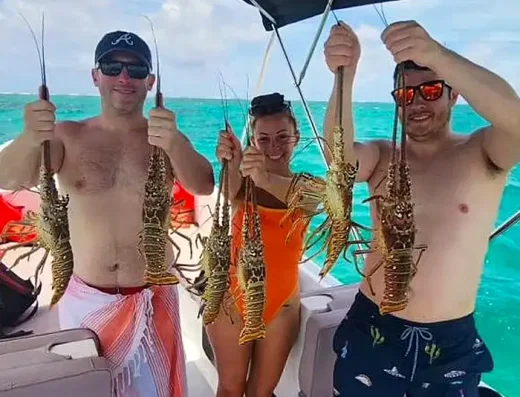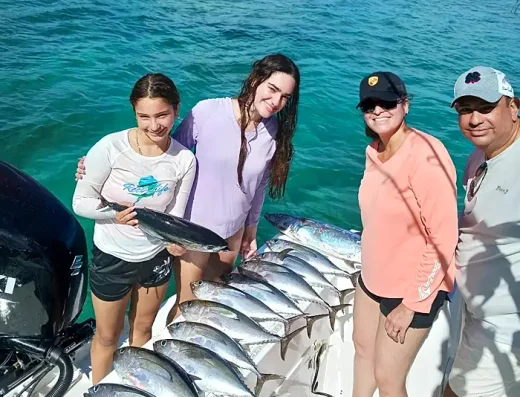Charter Fishing the Caribbean
Caribbean fishing charters target marlin, mahi mahi, tuna, wahoo, snapper, and bonefish across deep offshore drop-offs, coral reefs, and inshore flats stretching from the Bahamas to the Grenadines.
Top Rated Charters in Caribbean
Click to View Destinations
TrustedFish connects anglers with proven local captains in the Caribbean—no commissions, no pay-to-play listings, no BS. Every charter on our platform is invite-only, vetted for skill, local knowledge, and reputation. If they’re listed, they’ve earned it.
Caribbean Fishing Guide
The Caribbean is one of the most complete saltwater fisheries on earth, offering bluewater pelagics, coral reef species, and world-class flats within short runs of nearly every island. The defining feature is depth — the seafloor drops from shallow reef to thousands of feet within a few miles, putting marlin and tuna within easy reach of small charter vessels.
Most island fisheries are structured the same way: inshore reef and flats fishing on one side, and deepwater trolling on the other. The leeward coasts, shielded from prevailing trade winds, usually hold calmer waters for half-day trips and reef work. Windward sides drop quickly into deep bluewater, perfect for full-day offshore runs. The result is a system where captains can fish for wahoo and mahi in the morning, then switch to bottom fishing or bonefish by afternoon.
From the Bahamas south to Aruba, offshore drop-offs mark the edges of the Caribbean Plate. Blue marlin are caught year-round, but the best bite follows warm current movements — generally March through September in the northern islands and later in the year farther south. White marlin and sailfish mix in along edges and seamounts. Yellowfin and blackfin tuna feed around FADs, shelf breaks, and down-current ledges. Wahoo are strongest during cooler months, often taken high-speed trolling along reef lines between 150 and 500 feet.
Inshore, reef structure provides steady action. Snapper, grouper, and barracuda are consistent targets, while shallow grass and sand flats hold bonefish, permit, and tarpon. The Bahamas, Turks and Caicos, Cuba’s Jardines de la Reina, and the flats around Belize are the most recognized bonefish and permit waters. In contrast, the southern and eastern islands — such as St. Lucia, Barbados, Grenada, and Trinidad — lean heavily toward pelagic charters, with deep water sitting within minutes of the docks.
Trip styles vary by island. Half-day trips generally focus on reef species or nearshore trolling for wahoo, king mackerel, and mahi. Full-day charters head offshore to target marlin and tuna along the shelf edge, often within 10–15 nautical miles. Most boats troll 5–7 lines with skirted lures, rigged ballyhoo, or cedar plugs depending on local bait availability. Deep-dropping for snapper and grouper with electric reels is common when current slackens or wind limits trolling.
Seasonally, trade winds drive both fishing and sea state. Winter offers calmer days in the southern Caribbean but stronger winds north of Puerto Rico. Spring through early autumn delivers stable weather and prime pelagic runs throughout the chain. Hurricanes are a consideration in late summer and early fall, but even then, sheltered leeward sides often remain fishable.
Across the region, every harbor has a different rhythm — but the fundamentals stay the same: warm water, quick access to depth, and fish-rich structure that produces consistently year-round.
Fishing Seasons in Caribbean
Bahamas
Puerto Rico & Virgin Islands
Dominican Republic
Barbados & St. Lucia
Grenada & Tobago
Belize & Cuba
Aruba, Bonaire & Curaçao
Fishing Seasons in Caribbean
Spring (March–May)
Summer (June–August)
Fall (September–November)
Winter (December–February)
Gamefish in the Caribbean
- Blue Marlin – 100–600+ lbs. Caught along steep drop-offs and canyons across the Caribbean. Peak bite June–August on the northern islands and later in the south. Troll large skirted lures or live skipjack tuna.
- White Marlin – 50–100 lbs. Common off Puerto Rico and the Dominican Republic from March–June. Taken trolling smaller skirts or rigged ballyhoo on 30–50 lb tackle.
- Sailfish – 40–100 lbs. Found around current rips and ledges from the Virgin Islands south to Grenada, strongest December–April.
- Yellowfin Tuna – 20–150 lbs. Year-round, feeding around shelf breaks, FADs, and seamounts. Most caught trolling or chunking live bait on current lines.
- Blackfin Tuna – 5–30 lbs. Abundant throughout the region, especially near reefs and FADs. Reliable action on smaller feathers or pilchard baits.
- Mahi Mahi (Dorado) – 10–50 lbs. Common under floating debris and weed lines, peak March–August. Takes trolled ballyhoo or casting lures around structure.
- Wahoo – 20–80 lbs. Strongest December–April, particularly around reef edges and island drop-offs. High-speed trolling 12–18 knots is the standard technique.
- King Mackerel – 10–40 lbs. Found inshore and near reef edges year-round. Troll lures or slow-troll live bait.
- Amberjack – 10–70 lbs. Deep reef and wreck species, targeted with vertical jigs or live bait around 200–400 ft.
- Dogtooth Snapper – 10–50 lbs. Found along deep reef drop-offs, particularly in southern islands. Strong fighter, often taken deep-jigging or on heavy bait rigs.
- Queen Snapper – 5–25 lbs. Deepwater species from 600–1,000 ft, taken with electric reels over seamounts.
- Yellowtail & Mutton Snapper – 2–10 lbs. Year-round on reefs and wrecks; chumming and live-baiting effective in calm water.
- Grouper (Red, Nassau, Black) – 5–50 lbs. Found around reefs, ledges, and wrecks throughout the region. Stronger bite during cooler months.
- Bonefish – 2–8 lbs. Found on sand and grass flats in the Bahamas, Belize, and Cuba. Sight-cast with light spin or fly tackle.
- Permit – 10–40 lbs. Flats and channel edges near Belize and the Yucatán. Fickle but world-class sight-fishing.
- Tarpon – 10–150 lbs. Lagoons, mangroves, and channels throughout the northern Caribbean. Peak April–September on calm tides.
- Barracuda – 10–40 lbs. Common reef predator across all islands, taken on fast-trolled lures or casting plugs near structure.
- Tilefish & Barrelfish – Deepwater species in 700–1,200 ft, caught while electric deep-dropping off Puerto Rico, St. Croix, and Tobago.







